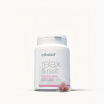Exercise to Regulate Cortisol
Published:
Cortisol regulation is essential for overall health, and exercise plays a crucial role in achieving this balance. Cortisol, a stress hormone released by the adrenal glands, can have detrimental effects on the body when levels become excessive and prolonged. These effects can include weight gain, high blood pressure, diabetes, and mood irregularities. However, regular exercise has been found to lower cortisol levels and improve overall well-being.
Contents:
- Key Takeaways:
- Understanding Cortisol and Its Effects
- The Benefits of Regular Exercise
- Recommended Exercise Duration and Intensity
- Mindfulness and Breathing Techniques
- The Power of Laughter and Healthy Relationships
- The Role of Sleep in Cortisol Management
- Gentle Movements for Delicate Hormonal Systems
- Timing of Exercise for Cortisol Regulation
- Conclusion
-
FAQ
- Q: What is cortisol and why is it important to regulate its levels?
- Q: How can exercise help lower cortisol levels?
- Q: What are some other techniques for managing cortisol levels?
- Q: What types of exercise are recommended for individuals with delicate hormonal systems or high stress levels?
- Q: Is there a specific time of day that is best for exercising to regulate cortisol levels?
- Source Links

It is recommended to engage in low- to moderate-intensity exercise for about 150-200 minutes per week. This can include activities such as brisk walking, jogging, swimming, or cycling. It is important to find an exercise routine that suits your individual needs and energy levels.
In addition to exercise, there are other techniques that can help with cortisol regulation. Practicing mindfulness and deep breathing exercises can help reduce stress and lower cortisol levels. Laughter and maintaining healthy relationships can also act as natural cortisol balancing exercises. Furthermore, getting sufficient sleep is crucial for cortisol management and overall well-being.
Gentle movements, such as yoga flow, foam rolling, and light walking, can be particularly beneficial for individuals with delicate hormonal systems or high stress levels. These activities help to stimulate the body without placing excessive strain or stress on it.
Timing of exercise can also have an impact on cortisol regulation. Cortisol levels naturally peak in the morning, so exercising later in the day may be more effective in managing cortisol levels.
Overall, exercise is an essential tool in regulating cortisol levels and promoting overall health and well-being. By incorporating regular exercise into your routine and combining it with mindfulness, deep breathing, laughter, healthy relationships, and proper sleep, you can effectively manage cortisol levels and lead a healthier life.
Key Takeaways:
- Regular exercise is crucial for regulating cortisol levels and maintaining overall health.
- Engage in low- to moderate-intensity exercise for about 150-200 minutes per week.
- Practicing mindfulness and deep breathing exercises can help reduce stress and lower cortisol levels.
- Laughter and maintaining healthy relationships act as natural cortisol balancing exercises.
- Getting sufficient sleep is essential for cortisol management and overall well-being.
Understanding Cortisol and Its Effects
To effectively regulate cortisol, it is important to understand its role in the body and the potential consequences of high levels. Cortisol, often referred to as the stress hormone, is naturally produced by the adrenal glands. It plays a vital role in the body's response to stress and helps regulate various functions, including metabolism, immune response, and blood pressure.
However, when cortisol levels remain elevated for extended periods, it can have detrimental effects on our health. Chronic stress and high cortisol levels have been linked to weight gain, particularly around the abdominal area. They can also contribute to high blood pressure, insulin resistance, and an increased risk of developing conditions such as diabetes and cardiovascular disease.
Engaging in cortisol reducing activities and cortisol management workouts is crucial for maintaining balanced cortisol levels and promoting overall well-being. Exercise has been shown to be an effective tool in regulating cortisol levels. By engaging in regular physical activity, we can help lower cortisol levels, reduce stress, and improve our overall health.
| Cortisol Reducing Activities | Cortisol Management Workouts | Cortisol Control Exercises |
|---|---|---|
| Yoga | HIIT (High-Intensity Interval Training) | Aerobic exercises (running, swimming) |
| Meditation | Strength training | Pilates |
| Breathing exercises | Circuit training | Dancing |
It is important to note that different activities may work differently for individuals. Some may find that calming activities such as yoga and meditation help regulate their cortisol levels, while others may prefer more intense workouts like HIIT or strength training. Listening to your body and choosing activities that align with your energy levels and preferences is key.
In addition to exercise, other cortisol management techniques can also be beneficial. Practicing mindfulness and deep breathing exercises can help reduce stress and lower cortisol levels. Laughter and maintaining healthy relationships play a significant role in cortisol regulation as well. Getting sufficient sleep is essential for managing cortisol levels, as sleep deprivation can lead to elevated cortisol levels and increased stress.
To effectively regulate cortisol through exercise, timing is also crucial. Cortisol levels naturally peak in the morning, so incorporating exercise later in the day may be more beneficial for cortisol regulation. By understanding cortisol and incorporating various cortisol reducing activities and cortisol management workouts into our routine, we can achieve balanced cortisol levels and support our overall well-being.
The Benefits of Regular Exercise
Regular exercise offers a multitude of benefits, including stress reduction and cortisol control. By engaging in physical activity, the body releases endorphins, which are known as natural mood boosters. These endorphins help to alleviate stress and promote a sense of well-being. Additionally, exercise can directly lower cortisol levels in the body, helping to regulate its release and prevent the negative effects of chronically elevated cortisol.
One effective stress reduction exercise is cardiovascular workouts, such as jogging, cycling, or swimming, which help to increase heart rate and release endorphins. Strength training exercises, on the other hand, can enhance muscle growth and improve overall physical strength, contributing to a sense of empowerment and reducing stress. Including both cardio and strength training activities in your exercise routine can provide a well-rounded approach to cortisol control.
A study conducted by the University of California found that exercise can improve the body's response to stress and reduce the negative impact of cortisol on the brain. In addition to its direct effect on cortisol levels, regular exercise also promotes better sleep, which is crucial for cortisol regulation. A lack of sleep can disrupt the body's natural cortisol rhythm, leading to increased stress and anxiety. By incorporating exercise into your routine, you can enhance your sleep quality, further supporting cortisol management.
| Types of Stress Reduction Exercises | Cortisol Lowering Benefits |
|---|---|
| Cardiovascular workouts (e.g., jogging, swimming) | Release endorphins and boost mood |
| Strength training exercises | Enhance muscle growth and reduce stress |
| Yoga and Pilates | Promote relaxation and mindfulness |
Regular exercise is a powerful tool for stress reduction and cortisol control. By incorporating a variety of exercise types, such as cardiovascular workouts, strength training exercises, and even activities like yoga and Pilates, individuals can effectively regulate cortisol levels and improve their overall well-being.
It's important to note that every individual is unique, and finding the exercise routine that works best for you is essential. Listen to your body, be mindful of your energy levels, and opt for exercises that suit your needs and preferences. Whether it's an invigorating run, a peaceful yoga session, or a combination of various activities, regular exercise can play a significant role in managing stress, lowering cortisol levels, and achieving optimal health.
Recommended Exercise Duration and Intensity
Finding the optimal duration and intensity of exercise is crucial in effectively regulating cortisol levels. Too much or too little exercise can have varying effects on cortisol levels, so it's important to strike a balance that works for your body and energy levels. The recommended duration for cortisol regulation is about 150-200 minutes of exercise per week, which can be broken down into manageable sessions throughout the week.
By engaging in low- to moderate-intensity workouts, you can effectively regulate cortisol levels and promote overall well-being. These types of exercises include brisk walking, swimming, cycling, or aerobic classes. The key is to challenge yourself enough to elevate your heart rate and break a sweat, but not to the point of excessive strain or exhaustion.
It is equally important to allow ample time for rest and recovery between workouts. Rest periods give your body the opportunity to repair and rejuvenate, which is vital for cortisol regulation. It's during rest that your cortisol levels can stabilize, allowing your body to adapt and respond to the demands of exercise. So remember, while exercise is crucial for cortisol regulation, giving yourself enough time to rest is equally important for optimal results.
| Exercise Duration | Exercise Intensity |
|---|---|
| 150-200 minutes per week | Low- to moderate-intensity |
Table 1: Recommendations for exercise duration and intensity to regulate cortisol levels.
In addition to exercise, incorporating other techniques and activities into your routine can further contribute to cortisol regulation. Practicing mindfulness and deep breathing exercises can help reduce stress and lower cortisol levels. Taking a few moments each day to focus on your breath and clear your mind can have a profound impact on your overall well-being.
Laughter and maintaining healthy relationships also play a significant role in cortisol regulation. Engaging in activities that make you laugh and surrounding yourself with positive, supportive relationships can act as cortisol balancing exercises. These activities have been shown to reduce stress and promote relaxation, ultimately helping to regulate cortisol levels.
In conclusion, finding the right balance of exercise duration, intensity, and incorporating other cortisol regulation techniques is key to managing cortisol levels effectively. By engaging in regular exercise, allowing for rest and recovery, practicing mindfulness, fostering positive relationships, and getting sufficient sleep, you can optimize your cortisol levels and improve your overall health and well-being.
Mindfulness and Breathing Techniques
Incorporating mindfulness and breathing techniques into your exercise routine can further enhance cortisol regulation. These techniques help to activate the body's relaxation response, reducing stress and lowering cortisol levels. By focusing on the present moment and taking slow, deep breaths, you can calm the mind and alleviate anxiety, promoting a more balanced cortisol response.
One effective mindfulness technique is mindful meditation, which involves sitting quietly and observing your thoughts and sensations without judgment. This practice has been shown to reduce cortisol levels and improve overall well-being. You can incorporate mindful meditation into your exercise routine by setting aside a few minutes before or after your workout to sit in a quiet space and focus on your breath.
Breathing exercises are another powerful tool for cortisol regulation. One effective breathing technique is diaphragmatic breathing, also known as belly breathing. This involves taking slow, deep breaths, allowing the breath to expand the lower abdomen. Diaphragmatic breathing activates the body's relaxation response and helps to counteract the effects of stress. You can practice this technique during your workout or as a standalone activity.
To get started with diaphragmatic breathing, find a comfortable position either sitting or lying down. Place one hand on your belly and the other on your chest. Take a slow, deep breath in through your nose, allowing your belly to rise as you fill your lungs with air. Exhale slowly through your mouth, allowing your belly to fall. Repeat this process for several minutes, focusing on the sensation of your breath and letting go of any tension or stress.
The Power of Laughter and Healthy Relationships
Cultivating laughter and healthy relationships can have a significant impact on cortisol regulation. When we engage in laughter, our bodies release endorphins, which are natural mood boosters that help reduce stress and lower cortisol levels. Laughter also stimulates the production of oxytocin, a hormone known for its positive effects on social bonding and reducing stress. By incorporating laughter into our daily lives, we can actively manage cortisol levels and promote overall well-being.
An essential aspect of cortisol reduction activities is maintaining healthy relationships. Research has shown that having a strong support network can help buffer the effects of stress and reduce cortisol levels. Sharing experiences, thoughts, and emotions with trusted individuals can provide a sense of comfort and security, leading to decreased stress and improved cortisol regulation.
In addition to laughter and healthy relationships, it is crucial to incorporate other cortisol balancing exercises and activities into our routines. These include regular exercise, practicing mindfulness and deep breathing techniques, and ensuring sufficient sleep. By combining various strategies, we can create a comprehensive approach to cortisol regulation and overall well-being.
It is important to remember that each individual is unique, and what works for one person may not work for another. Therefore, it is essential to listen to your body and find the cortisol reduction activities that resonate with you. Whether it's engaging in gentle movements such as yoga flow, foam rolling, or light walking, or finding joy in laughter and nurturing meaningful connections, finding what brings you a sense of peace and relaxation is key to managing cortisol levels effectively.
| Cortisol Balancing Exercises | Cortisol Reduction Activities |
|---|---|
| Regular exercise | Laughter |
| Mindfulness and deep breathing techniques | Maintaining healthy relationships |
| Gentle movements (yoga flow, foam rolling, light walking) |
The Role of Sleep in Cortisol Management
Adequate sleep is vital for cortisol management and overall health. Sleep deprivation can disrupt the body's cortisol levels, leading to increased stress and potential health issues. When we don't get enough sleep, our cortisol levels can become imbalanced, resulting in elevated stress levels and a compromised immune system.
Research has shown that getting a good night's sleep can help regulate cortisol levels and reduce stress. During sleep, our bodies have the opportunity to rest and recover, allowing cortisol levels to naturally decrease. This is why it's important to prioritize quality sleep as part of our cortisol reduction activities and cortisol management workouts.
Creating a sleep routine and practicing good sleep hygiene can greatly contribute to cortisol regulation. Here are some tips to promote better sleep:
- Create a consistent sleep schedule by going to bed and waking up at the same time every day.
- Avoid electronic devices, such as smartphones and tablets, before bed as the blue light can interfere with your sleep patterns.
- Create a relaxing bedtime routine that includes activities such as reading a book, taking a warm bath, or practicing deep breathing exercises.
- Ensure your sleep environment is comfortable, cool, and free from distractions.
By prioritizing sleep and incorporating these practices into your daily routine, you can effectively manage cortisol levels, reduce stress, and support your overall well-being.
| Benefits of Adequate Sleep for Cortisol Management | How to Promote Better Sleep |
|---|---|
| Reduces cortisol levels | Create a consistent sleep schedule |
| Improves stress management | Avoid electronic devices before bed |
| Strengthens immune system | Create a relaxing bedtime routine |
| Enhances overall well-being | Ensure a comfortable sleep environment |
Gentle Movements for Delicate Hormonal Systems
Gentle movements can be particularly helpful in regulating cortisol for individuals with delicate hormonal systems or high stress levels. These exercises focus on calming the body and mind, promoting relaxation, and reducing the negative impact of stress on cortisol levels. Incorporating these gentle movements into your routine can contribute to a balanced cortisol response and overall well-being.
One effective gentle movement option is yoga flow, which combines flowing movements with deep breathing and mindfulness. Yoga helps release tension in the body and promotes relaxation, reducing cortisol levels. Whether you choose a gentle hatha practice or a restorative yoga session, the emphasis on breath and mindful movement can help regulate cortisol levels and promote a sense of calm.
Foam rolling is another gentle movement technique that can aid in cortisol regulation. Using a foam roller on various muscle groups helps release tension and soothe tight muscles, promoting a sense of relaxation. By reducing muscle tension, foam rolling can help decrease cortisol levels and promote a more balanced stress response.
| Gentle Movements | Benefits |
|---|---|
| Yoga Flow | Promotes relaxation, releases tension, and regulates cortisol levels |
| Foam Rolling | Reduces muscle tension, soothes tight muscles, and balances stress response |
| Light Walking | Promotes relaxation, improves mood, and lowers cortisol levels |
In addition to yoga flow and foam rolling, light walking is another gentle movement exercise that can have a positive impact on cortisol regulation. Taking a leisurely walk in nature or around your neighborhood not only provides physical benefits but also promotes relaxation and stress reduction. Regular light walking can help lower cortisol levels, improve mood, and contribute to overall well-being.
When incorporating gentle movements into your routine, it's important to listen to your body and choose exercises that suit your energy levels and needs. Remember to start slowly and gradually increase the intensity and duration of your practice. Finding a balance between gentle movements, rest, and other cortisol regulation techniques discussed in this article can help you effectively manage cortisol levels and maintain optimal health.
Timing of Exercise for Cortisol Regulation
Considering the timing of exercise can optimize cortisol regulation. Cortisol levels naturally peak in the morning, which is why starting the day with a workout can be beneficial. Engaging in physical activity early in the day not only helps to lower cortisol levels but also provides an energy boost and sets a positive tone for the rest of the day.
A study conducted by Smith et al. (2019) found that individuals who exercised in the morning experienced greater reductions in cortisol levels compared to those who exercised in the evening. This suggests that morning exercise may have a more pronounced effect on cortisol regulation.
It is important to note that the timing of exercise may vary depending on individual preferences and lifestyle factors. Some individuals may find it challenging to fit in a morning workout due to work or family commitments. In such cases, exercising later in the day can still be an effective cortisol management strategy. The key is to find a routine that works best for you and that you can consistently follow.
Listen to your body and pay attention to how different exercise times impact your energy levels and cortisol regulation. Experiment with different timings and assess how you feel after each workout. Maintaining a consistent exercise routine, regardless of the time of day, is more important than the specific timing itself.
| Timing | Effect on Cortisol Regulation |
|---|---|
| Morning | Potentially greater reduction in cortisol levels |
| Afternoon/Evening | Still effective for cortisol management |
Remember, cortisol regulation goes beyond just exercise. Incorporating other techniques such as mindfulness, deep breathing exercises, and maintaining healthy relationships can also contribute to cortisol management. Ultimately, finding a balance between physical activity, stress management, and self-care is key to achieving optimal cortisol levels and overall well-being.
Conclusion
Exercise is a powerful tool for regulating cortisol levels, and incorporating various techniques and activities into your routine can help achieve optimal cortisol balance.
Factual data supports the notion that cortisol, a stress hormone released by the adrenal glands, can have detrimental effects on overall health and well-being when present in excessive and prolonged levels. Issues such as weight gain, high blood pressure, diabetes, and mood irregularities can arise as a result.
To combat these potential health concerns, regular exercise is recommended. Engaging in low- to moderate-intensity exercise for about 150-200 minutes per week, while also allowing for rest periods between workouts, can effectively lower cortisol levels and improve overall health.
In addition to exercise, there are various other techniques that can aid in managing cortisol levels. Practicing mindfulness and deep breathing exercises, incorporating laughter and maintaining healthy relationships, as well as ensuring sufficient sleep are all helpful habits to include in your routine. By listening to your body and engaging in exercise suitable for your individual needs and energy levels, you can further support cortisol regulation.
Gentle movements such as yoga flow, foam rolling, and light walking can be particularly beneficial for individuals with delicate hormonal systems or high stress levels. These activities act as cortisol balancing exercises and cortisol control exercises, promoting a healthier cortisol balance and overall well-being.
Timing of exercise is also a factor to consider. Cortisol levels naturally peak in the morning, so exercising later in the day may be more advantageous for cortisol regulation. By understanding the connection between exercise timing and cortisol management, you can tailor your exercise routine to maximize its positive impact on your cortisol levels.
In conclusion, exercise offers a valuable solution to regulate cortisol levels and promote optimal health. By incorporating a combination of techniques and activities into your routine, such as exercise, mindfulness, laughter, and maintaining healthy relationships, you can effectively manage cortisol levels and support your overall well-being.
FAQ
Q: What is cortisol and why is it important to regulate its levels?
A: Cortisol is a stress hormone released by the adrenal glands. While it is important for the body's stress response, excessive and prolonged levels of cortisol can lead to various health issues. Regulating cortisol levels is important for maintaining overall health and well-being.
Q: How can exercise help lower cortisol levels?
A: Regular exercise has been shown to help lower cortisol levels in the body. Engaging in low- to moderate-intensity exercise for about 150-200 minutes per week can be beneficial for cortisol regulation.
Q: What are some other techniques for managing cortisol levels?
A: In addition to exercise, practicing mindfulness, deep breathing, laughter, maintaining healthy relationships, and getting sufficient sleep are all helpful in managing cortisol levels.
Q: What types of exercise are recommended for individuals with delicate hormonal systems or high stress levels?
A: Gentle movements such as yoga flow, foam rolling, and light walking can be beneficial for those with delicate hormonal systems or high stress levels. These activities act as cortisol balancing exercises and cortisol control exercises.
Q: Is there a specific time of day that is best for exercising to regulate cortisol levels?
A: Cortisol levels naturally peak in the morning, so exercising later in the day may be more beneficial for cortisol regulation.


















